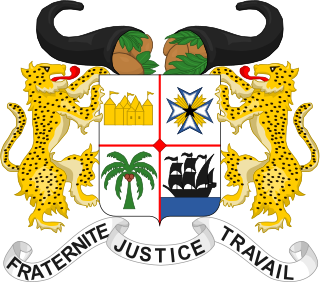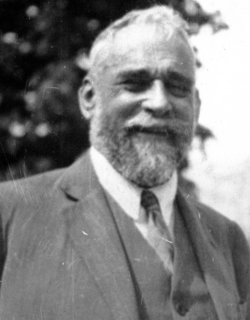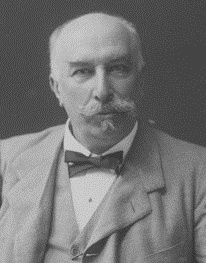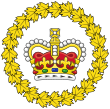National referendums are seldom used in Canada. The first two referendums saw voters in Quebec and the remainder of Canada take dramatically opposing stands, the third saw most of the voters take a stand dramatically opposed to that of the politicians in power.
The Conscription Crisis of 1944 was a political and military crisis following the introduction of forced military service for men in Canada during World War II. It was similar to the Conscription Crisis of 1917, but was not as politically damaging.

The Australian electoral system comprises the laws and processes used for the election of members of the Australian Parliament. The system presently has a number of distinctive features including compulsory enrolment, compulsory voting, majority-preferential instant-runoff voting in single-member seats to elect the lower house, the House of Representatives, and the use of the single transferable vote proportional representation system to elect the upper house, the Senate.

The Canadian federal election of 1921 was held on December 6, 1921, to elect members of the House of Commons of Canada of the 14th Parliament of Canada. The Union government that had governed Canada through the First World War was defeated, and replaced by a Liberal government under the young leader William Lyon Mackenzie King. A new third party, the Progressive Party, won the second most seats in the election.

The Canadian federal election of 1926 was held on September 14 to elect members of the House of Commons of Canada of the 16th Parliament of Canada. The election was called following an event known as the King–Byng affair. In the 1925 federal election, Prime Minister William Lyon Mackenzie King's Liberal Party of Canada won fewer seats in the House of Commons of Canada than the Conservatives of Arthur Meighen. Mackenzie King, however, was determined to continue to govern with the support of the Progressive Party. The combined Liberal and Progressive caucuses gave Mackenzie King a plurality of seats in the House of Commons, and the ability to form a minority government. The agreement collapsed, however, following a scandal, and Mackenzie King approached the Governor-General, Baron Byng of Vimy, to seek dissolution of the Parliament. Byng refused on the basis that the Conservatives had won the largest number of seats in the prior election, and called upon Meighen to form a government.

Elections in Benin take place within the framework of a multi-party democracy and a presidential system. Both the President and the National Assembly are directly elected by voters, with elections organised by the Autonomous National Electoral Commission (CENA).

Referendums in Australia are polls held in Australia to approve parliament-proposed changes to the Constitution of Australia or to the constitutions of states and territories. Polls conducted on non-constitutional issues are usually referred to as plebiscites.

Elections in Rwanda take place within the framework of a multi-party democracy and a presidential system. The President and majority of members of the Chamber of Deputies are directly elected, whilst the Senate is indirectly elected and partly appointed.

The New Zealand general election of 1911 was held on Thursday, 7 and 14 December in the general electorates, and on Tuesday, 19 December in the Māori electorates to elect a total of 80 MPs to the 18th session of the New Zealand Parliament. A total number of 590,042 (83.5%) voters turned out to vote. In two seats there was only one candidate.

Parliamentary elections were held in Greece on 1 November 1920. They were possibly the most crucial elections in the modern history of Greece, influencing not only the few years afterwards, including the country's defeat by Kemal Atatürk's reformed Turkish army in 1922, but setting the stage for Greece's political landscape for most of the rest of the 20th century. It had been nearly five years since the last election, a period during which all democratic procedures were suspended due to the National Schism, when Prime Minister Eleftherios Venizelos announced that the elections would take place on 25 October. However, after the unexpected death of King Alexander, who had assumed the throne after the exile of his father, King Constantine I, the elections were postponed until 1 November.

Pierre-Joseph-Arthur Cardin, also known as Arthur Cardin was a Canadian politician who quit the cabinet of William Lyon Mackenzie King over the issue of conscription.

General elections were held in Romania in December 1937. The Chamber of Deputies was elected on 20 December, whilst the Senate was elected in three stages on 22, 28 and 30 December. The National Liberal Party remained the largest party, winning 152 of the 387 seats in the Chamber of Deputies and 97 of the 112 seats in the Senate elected by universal male vote, although it lost its majority in the Chamber. The party's unexpectedly poor showing meant they could not form a coalition with either their arch-rivals the National Peasants' Party or with the Iron Guard's Everything for the Country Party, King Carol II invited the poet Octavian Goga to form a government, despite the fact that his National Christian Party finished fourth and had an avowedly anti-Semitic platform.

Parliamentary elections were held in Russia on 12 December 1993. They included the last elections to the Federation Council of Russia.
A constitutional and electoral age referendum was held in Denmark on 28 May 1953. Both proposals were approved by voters, leading to both a new constitution taking effect on 5 June, and the electoral age being lowered from 25 to 23 years, also starting on 5 June. Voter turnout was 59.1% for the constitution question and 57.1% for the voting age question.
Vermilion is a former provincial electoral district in Alberta which existed from 1905 to 1921.
Grouard was a provincial electoral district in Alberta, Canada. It was mandated to return a single member to the Legislative Assembly of Alberta from 1913 to 1971.
Hand Hills was a provincial electoral district in Alberta, Canada. It was mandated to return a single member to the Legislative Assembly of Alberta from 1913 to 1963. It was abolished prior to the 1963 Alberta general election due to redistribution, in favour of the new electoral district of Hand Hills-Acadia.

Full general elections were held in Belgium on 2 June 1912.

General elections were held in Italy on 3 June 1900, with a second round of voting on 10 June. The "ministerial" left-wing bloc remained the largest in Parliament, winning 296 of the 508 seats.
A referendum on the electoral system was held in Switzerland on 23 October 1910. Voters were asked whether they approved of introducing proportional representation for National Council elections. Although the proposal was approved by a majority of cantons, it was rejected by 52.5% of voters. This was the second such referendum, after the one in 1900 also failed. However, a third referendum on the same issue was held in 1918, and passed with 66.8% in favour.
















